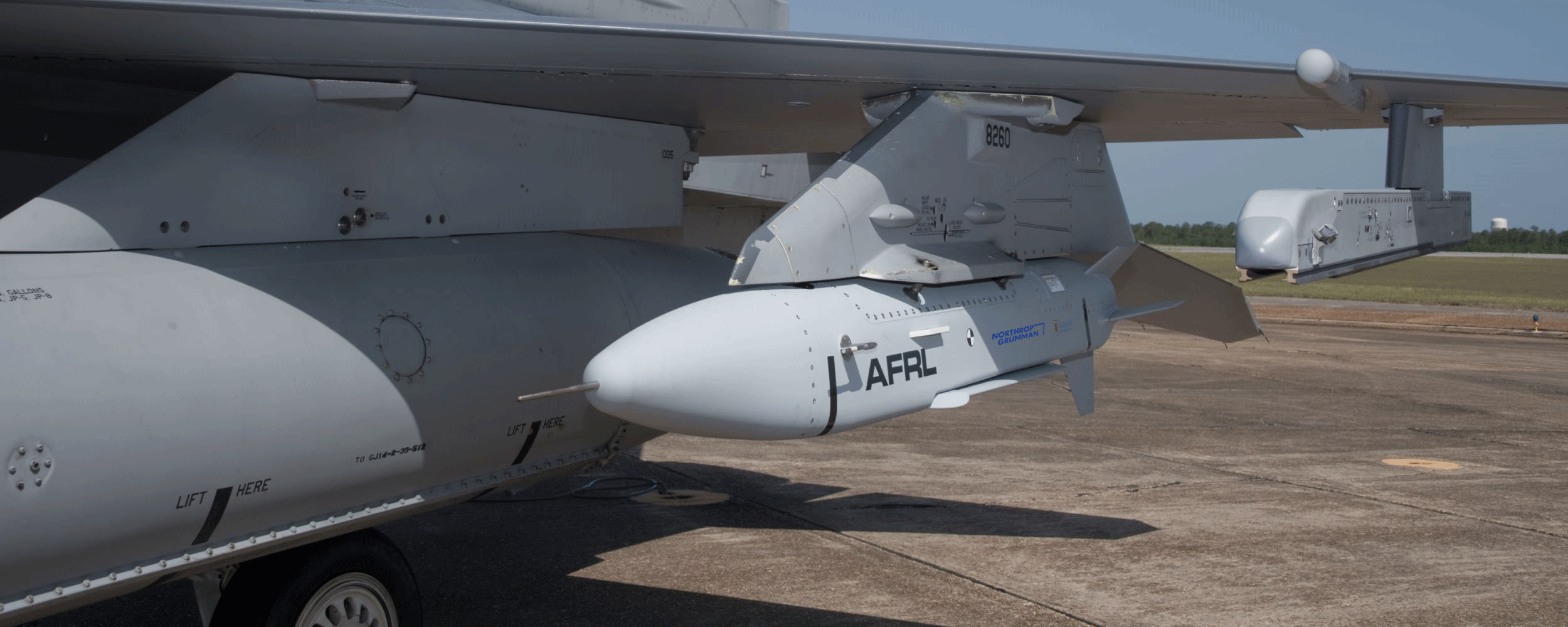Gray Wolf Missile Design
A Feat of Digital Engineering and Open Architecture

By Scott Gourley
As part of the U.S. Air Force WeaponONE Digital Enterprise Program, researchers are combining the strengths of digital engineering and open-architecture designs to address a dynamic spectrum of threats. Northrop Grumman's Gray Wolf cruise missile design is one of the latest results of this effort, bringing cost efficiencies and collaborative thinking together to produce a framework for digitally designed weapons.
Data-Informed Decisions
Dan Salluce, Northrop Grumman program manager for Gray Wolf, says that the current design emerged from a previous Low Cost Cruise Missile (LCCM) study sponsored by the Defense Advanced Research Projects Agency (DARPA) to explore the effectiveness and viability of developing a small, affordable, network-enabled, collaborative cruise missile.
With the goal of reducing weapon production cost by 80-90%, we knew that changes were required. Significant operations analysis and digital engineering models generated data that informed decisions to realize an open-architecture design and vehicle concept. Tying data to figures-of-merit aided our understanding of driving requirements for aircraft carriage, massed weapon employment, and lethal effects. The potential for this low cost cruise missile as a model for driving data into customer decisions became apparent when considering the ease of integration through our open implementations.
Digital Design and Development Accelerates Delivery
Over the past several years, Northrop Grumman has been working closely with the Air Force Research Lab (AFRL), Munitions Directorate under the Gray Wolf contract to make the early DARPA LCCM concept a reality. Northrop Grumman received one of two Gray Wolf contracts to pursue a prototype LCCM design and to develop low cost technical solutions and an innovative business model that enabled very low cost weapon production. The first Gray Wolf "spiral" began with the development of the basic airframe, without payload, that was capped at an affordable unit cost.
In pursuit of this goal, Northrop Grumman optimized a clean-sheet Gray Wolf design through lesson’s learned from the company’s experience in digital multi-disciplinary design, analysis, and optimization (MDAO) with considerations for production and sustainment of autonomous air vehicles and advanced weapon systems. Adoption of Agile processes allowed the team to develop the Gray Wolf design on an accelerated timeline, completing the system final design review with AFRL just ten months after contract award.
Salluce explained that the final Gray Wolf design featured a flexible, networked, open architecture that could support a range of payloads. One strategic goal of the program was to maximize loadouts and carriage of Gray Wolf vehicles on a wide variety of US Air Force and US Navy platforms.
Open Architecture and WOSA Specification
Jaime Engdahl, Director, Advanced Weapon Strategy for Northrop Grumman, observed that the Gray Wolf spiral one design is frequently used as an example of the Air Force weapon digital transformation effort and broader digital campaign.
Gray Wolf is designed to meet key USAF open system design requirements, such as Weapon Open System Architecture (WOSA) and the Universal Armament Interface (UAI). Engdahl described WOSA as an open-architecture specification that must be met by any new weapon systems entering the Air Force inventory. "In March 2021 AFRL completed initial laboratory validation of the system and declared Gray Wolf to be officially compliant with the WOSA contract requirements," he added.
Digital Twin – Ready for a Digital Takeoff with the USAF
Another Gray Wolf achievement that Engdahl identified involved UAI compatibility and the implications for rapid, low cost integration of weapon systems onto platforms. As was true with WOSA, the Gray Wolf clean-sheet design provided UAI compliance that allowed the Air Force to take the Gray Wolf design to the F-16 System Integration Laboratory and rapidly verify the integration in a lab environment prior to installing the missile on an actual F-16.
"We successfully demonstrated that we were passing the right messages between the aircraft and the weapon before loading hardware onto the aircraft. Ultimately, UAI and SIL activities accelerated our integration work and resulted in a weapon that has flown on the F-16 for many hours with no interface issues,” said Engdahl.
The next step, according to Salluce, is to "take the physical world into the digital world," using the Gray Wolf design as the first digital twin available in the USAF WeaponONE digital enterprise. Gray Wolf digital models and hardware-in-the-loop components will be used as a surrogate weapon platform to support research of current and future weapon capabilities.
The USAF and industry partners will build on the foundation laid by the Northrop Grumman Gray Wolf activities for years to come.
More Innovation Stories
Read all stories about advanced technology and innovation >>


